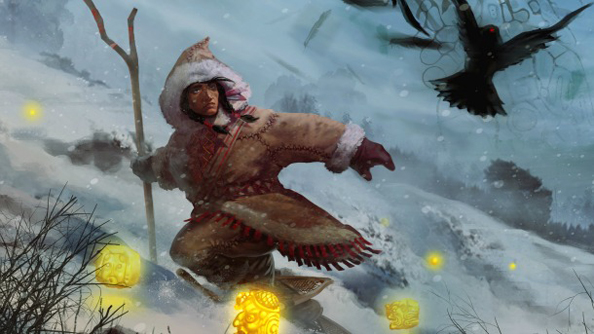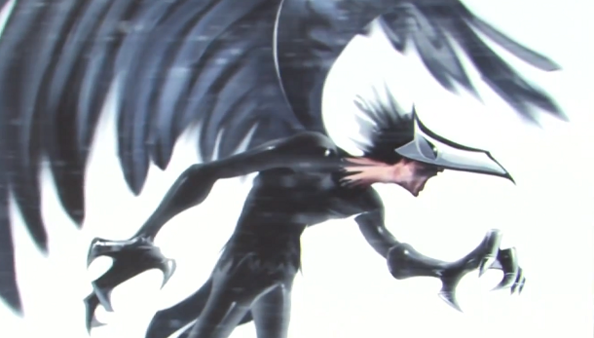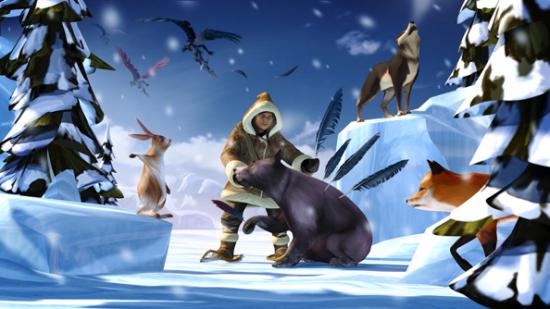We spend a lot of times in our games being bullies. We manipulate environments and the people in them; we knock NPCs over and laugh as they struggle to get back up. It can’t really be helped that those are the most entertaining ways to interact – but it’s cool to see somebody explicitly explore the other perspective.
Minority are the Montreal lot who made Papo and Yo – a game which, when stripped of its fantasy, was about navigating a Brazilian favela with your abusive, alcoholic father. They’re nearly done on their new thing – a puzzle-laden adventure about high school bullying.
Like Papo and Yo, Silent Enemy’s setting is one step removed from its actual subject matter. We’ll play as Chiwatin, a Native American navigating a land suffering beneath a permanent Winter where there’s “no hope, no Spring, no perspective” – inspired somewhat by the parts of Canada which never emerge from under the ice.
Chiwatin’s name means “son of the North wind” – and we’ll control him as he moves through the land on a quest to find a fabled Springtime.
In a short demo at GameCity in October, Minority’s Tali Goldstein showed us a pre-alpha version of Silent Enemy – an isometic puzzle game in which Chiwatin was steered directly about a colourful world that didn’t overstate the bleakness of its metaphor.
Chiwatin will often find himself stuck, physically, and forced to collect ‘spirit dust’ throughout levels. That dust can be used to build literal bridges across hazards like frozen lakes. Other puzzles – which will become gradually more “intellectually challenging” – will be solved with the help of Chiwatin’s directly-controlled companions: Rabbit, a grumpy and cautious friend who can exploit a tunnel network to open doors figuratively and literally; and Bear, a caring figure who can empower Chiwatin with her strength and size.

A third friend, Fox, is full of alternative solutions to Chiwatin’s Springtime problem – “but it’s not necessarily the best advice someone could give you”.
Silent Enemy’s antagonists are anthropomorphic crows – the game’s bullies, made half-human to keep them “relatable”.
“They are there to make the Chiwatin’s life miserable,” explained Goldstein. “They don’t want him to find Springtime, because they feed on fear and loneliness and this permanent Winter.”
The roles in its “metaphor for high school” are readily apparent – the “new kid of the block”, the “standbys”, and the bullies themselves. But Goldstein and Minority are wary of forefronting Silent Enemy’s subtext.
“It’s not everyone who wants to have an emotional experience,” said Goldstein. “If you’re not interested in that, you will have a nice time, you will have great puzzles. You will have a great game. But if you feel like it, if you identify with the characters, if you bond with them – we promise that we will have something meaningful in there.”

That said, Goldstein believes that Silent Enemy’s themes are practically universal. When searching for a hook that spoke to everyone at the studio, Minority found that all of their staff had a common background in bullying.
“Everyone was bullied at some time, or even was a bully, or just stood still. Nobody in the studio and, I think, nobody in the world has just passed through this issue without some experience,” said Goldstein.
“On the other hand we wanted to something fun – we wanted to make entertainment. It’s about playing, it’s not just about having to repeat our backgrounds or making people have a catharsis. That’s not our goal.”
Silent Enemy was “almost finished” in October, and reached alpha in December. We can expect it sometime in the first half of this year. Does its subject matter speak to you, do you think?
